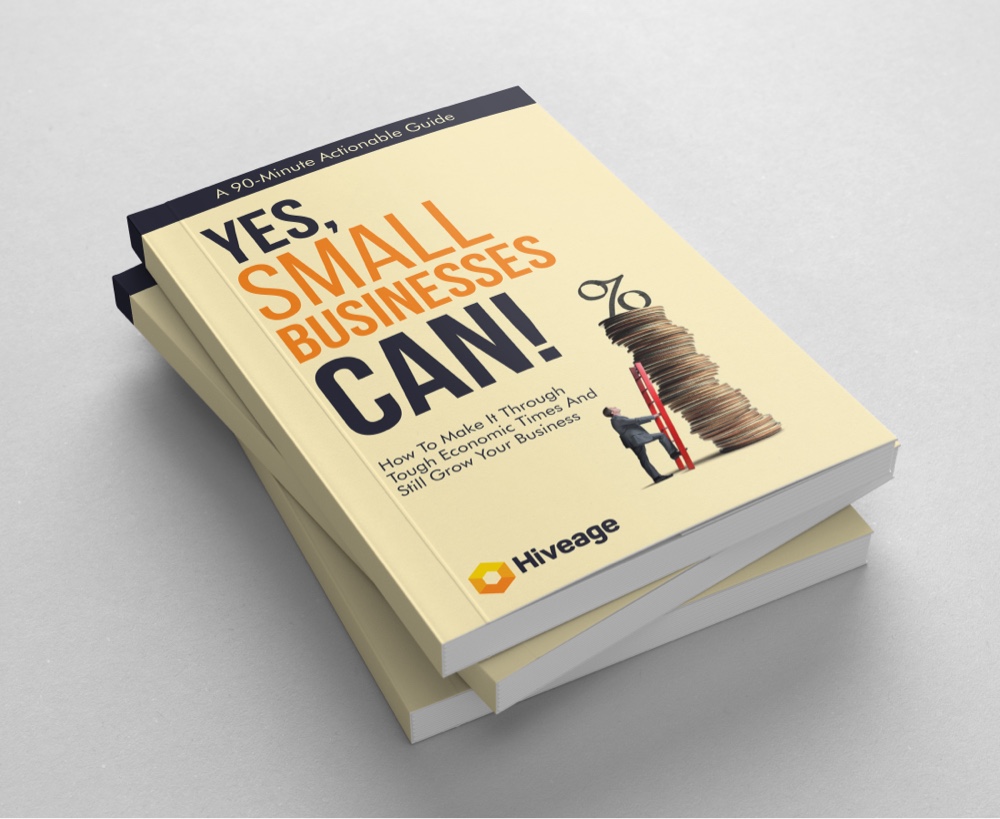How to Write and Send Invoice Emails — Invoice Email Template
Payday is one of the best parts of completing a project. If you have done some client work recently and wrapped up the project, you probably need to invoice your client to get paid.
Nonetheless, a lot of freelancers and small businesses are afraid that they will not receive payment for their work and end up being left unpaid. Even late payments can be a major pain when managing your cash flow.
The best way to avoid this is by following some simple but important steps when communicating with your client about invoice matters. Therefore, it’s wise to have an invoice email template for your invoices that is straightforward and easy to understand.

In this article we share with you tips and advice that you can use when sending an invoice email. We will also share a readily-usable invoice email template that will make it easier for you to get paid!
In this article . . .
- Why use an invoice email template?
- How do I create an invoice email template?
- What do you write in invoice emails?
- Example invoice email template
- How to write a cover letter for an invoice
- How do I send an invoice through email?
- How do I write a formal invoice?
- Automating invoice emails with invoicing software
Why Use an Invoice Email Template?
The quick answer is that email templates save you time: with a template, you wouldn’t have to type the message every time you have to write an invoice email to a client.
This is especially useful for companies with varied products or services, so they know which information is needed in the message and how it should be formatted.
A template is also a useful tool if you’re sending an invoice to multiple clients, as it ensures that the messages are consistent.
Another benefit of using templates for your invoices is that they can be personalized for each client by inserting their name and other relevant information into placeholders in advance.
How Do I Create an Invoice Email Template?
One of the most important things to consider when creating an email template is that it is relevant and personalized to your business or work. It should reflect not only the type of work you do, but also the type of relationship that you have with your clients.
However, your email template should also be generic enough that it can be applied to most or all of your clients, allowing you to simply make quick changes when necessary before sending it off.
Once you’re ready to draft your email, you can follow the below steps to create the perfect template for you to send to your clients. It can be a hassle to make invoices from scratch, so having a generic example can make the process much faster.
Keep Your Invoice Email Professional and Simple
Business owners often have trouble with writing their invoice emails. They worry about how formal they should be, or what should go into the letter.
The goal of an invoice email is to get paid, but you want your client to be more willing than just getting their money. You also want them to feel respected for the business transaction that they have made with you.
If you want to make sure that your email message is not ignored, it’s important for said mail to be professional. Keep the language simple but precise: avoid using too many abbreviations, complex words, or jargon only a company insider would understand.
The purpose of an invoice email is simply to send the invoice to your client: it doesn’t need to contain much other information. For the sake of your own time as well as your client’s, all you need to include is a brief message thanking them for their business, and outlining that you have attached an invoice for your work. If you want to get paid on time, it helps to use an email that is short and to the point.

Have a Descriptive Subject Line
We recommend that you include the most important information in the email subject line itself. The subject line should be unambiguous: the client should know that you are invoicing them, when they see your message’s subject line in the list of emails in their inbox. Otherwise, they might not even realize that you have sent an invoice, thus inadvertently delaying your payment.
We recommend you include the invoice number and the due date in the subject line when you write your email. For example:
Invoice [Number] for [Product/Service] Due on [Date]
This way you can make sure that your client knows exactly why you are contacting them, and that it’s time for them to pay you for your services.
What Do You Write in Invoice Emails?
Your message should include a brief description of the work that you have completed for the client. You should indicate whether your charge is per project or time worked.
In addition, you should include your rate, so that the client is clear over how much you are charging. It is also wise to add any other expenses which may not be covered by the client’s payment (such as shipping) so that there are no surprises.
As usual, your invoice letter or email should begin with a greeting. If you haven’t communicated with the recipient for a while, it is customary to include a brief message.
Then, you should inform your client that you are getting in touch to invoice them for the work you have completed, and that you have attached the invoice to this email.
Attach the Invoice
We recommend that you attach your invoice as a file/document instead of including it in the body of the email. PDF is generally best, as it works on all different kinds of devices and operating systems, and you can avoid compatibility issues. If you send the invoice as an attachment, your client can also easily print it out and save it for their records.
Use This Invoice Email Template
If you’re wondering how to write an invoice email, you can try using the following invoice message example:
Subject: Invoice [Number] Due on [Date]
Dear [Client],
I hope you are well.
Please see attached the invoice [number] for [completed project]. The invoice is due by [date].
Please don't hesitate to get in touch if you have any questions or need clarifications.
Best regards,
[Your name and email signature]
Note that this invoice email message example is brief and clear. There’s no need to include unnecessary details or conversation unless you have a very close relationship with the client and feel that it would be appropriate. This is, of course, at your own discretion.
How to Personalize Your Invoice Email
It’s recommended to personalize your email so that the client doesn’t feel like they have received a generic invoice letter.
When you send your invoices via email, you should include a personalized greeting, so your client knows that you have put some time and effort into reaching out. If you feel that it’s appropriate, you might also want to include a personalized message in the body of the email.

This helps set your business apart from others who are using the same template, and will make your customer feel like they have a more engaged experience with you.
How to Write a Cover Letter for an Invoice
If you have worked on a larger or more complex project for a client, it might be appropriate for you to include a cover letter with your invoices. This invoice letter is an opportunity for you to outline your rates, the work you have performed, as well as breaking down your rate and explaining why you have charged the amount that you have charged.
Your cover letter should include some basic details about who you are and what you provide. Make sure to include your business name or company name in the invoice letter. You should also include a timescale of the project you have worked on, including the start and end dates.
Then, you should break down each task you completed as part of the project and how much you are charging for this. If you charge per hour or day, then include this as part of the breakdown as well.
How to Write a Past Due Invoice Email
If your client has not missed the due date of an invoice, you may need to contact them again to follow up on the payment. It can feel awkward to contact a client repeatedly over the same issue, but you need to get paid for the work you have performed for them.
Be Polite But Firm in Your Invoice Message
Chasing payments is unfortunately a common grievance when working as a freelancer. Your client may have an explanation for why they have been unable to pay you before the due date.
Nonetheless, you shouldn’t let them avoid paying for your work. Make sure that your email is polite but firm. If this is the first instance that you’re contacting your client to follow up with them, there’s no need to be overly personal.
You can use the following email example to follow up on a late payment:
Subject: Re: Invoice [Number] Due on [Date]
Hi [name],
I hope that you have been well. I just wanted to check in with you about the invoice we sent last week for [product or service].
Let me know if there is anything else I can do to help get this paid ASAP.
Thank you!
Best,
[your name]
As you can see above, when following up on a late payment, it’s important to provide the invoice number and the date that it is due by.
How Do I Send an Invoice Through Email?
If you’re going to send an invoice via email, it's best to include it as an attachment. You can also use an invoicing software to generate invoices, as this makes the process easier (hint: we make an excellent one).
Also, you can use an email to send a link to an invoice that you have generated through services like PayPal. Many such payment gateways support basic invoice generation.
When you send the email with the invoice attached, make sure to include the relevant information in the document, like the name of your business, the amount you are charging, and the invoice number.
It is a good idea to include your business name and address in the email header or signature block, to make sure that it is clear you are sending an invoice as opposed to other types of emails.
How Do I Write a Formal Invoice?
As we have explained in our detailed article on how to write an invoice, it is important that your invoice includes all information required for your client to process the payment. thus, good invoice templates contain the following details.
Key Elements of an Invoice Template
- Your business details (name, logo, contact information)
- Invoice number
- Full name and contact details of the customer
- Invoice date
- Due date
- Due amount
- Itemized list of services/products along with the breakdown of rates and prices
- Additional details such as terms and conditions and payment methods
A good invoice template should allow you to break down each product or service into an item, and then outline how much you charge for each item. This is the clearest way for your client to see how much you charge, and why.
When it’s time for them to pay you, itemizing your services also makes it much easier for the client to know how much they owe. If you fail to do so, you may find that certain clients try to dispute the amount that you have charged, and this causes unnecessary delays.
Unfortunately, payment delays are often part of freelancing, but if you break down the information as clearly as you can, then you limit the chance of this happening as much as is reasonably possible.
Automating Invoice Emails with Hiveage
Tools like Hiveage helps you automate the process of creating invoices and emailing them to your clients. This makes the process very straightforward and significantly reduces the hassle for you.
By using software to automate your invoicing, you can limit the amount of energy you need to spend on admin work and creating documents and focus instead on actual work.
By automating your invoice email process, you can also ensure that they all meet the same standard, and always include relevant information. You don’t need to worry about accidentally leaving out vital details, such as a unique number for the invoice, or payment instructions.
With Hiveage, you also have the option of having a PDF copy of your invoice attached to the email message. A reliable invoicing process set up this way with the right tools will ensure that your small business finances remain healthy.
To recap, the key benefits of automating your invoicing are that you can:
- Save time
- Reduce the number of mistakes and typos in your invoices
- Add new features to invoice emails, such as additional payment methods or even an automated reorder system.
Depending on what kind of business model you have, it’s important that you choose software which caters to your specific requirements. In the case of Hiveage, our main customers are freelancers and small businesses, and the service is optimized for making their lives easy.
In Conclusion: Elements of a Good Invoice Email
The invoice email is one of the most important components to your business operation. If not done correctly, it can confuse and frustrate clients who may have difficulty understanding what you are asking for or how they should respond to a request for payment. A good invoice email includes a number of elements, including:
- The invoice number
- Due date
- Due amount
- Payment instructions that are clear and easy to follow
- A brief overview of deliverables or products sold
- Notice when payments are past due with an offer for how you will handle overdue balances.
A well-written email is the first step in establishing a good relationship with your client, and getting paid on time. Use our invoice email templates, or better yet, use our simple and powerful online invoicing software, to make sure you don’t lose out on payments!
Join thousands of business-savvy entrepreneurs on our mailing list.
Curated emails that’ll help you manage your finances better.





